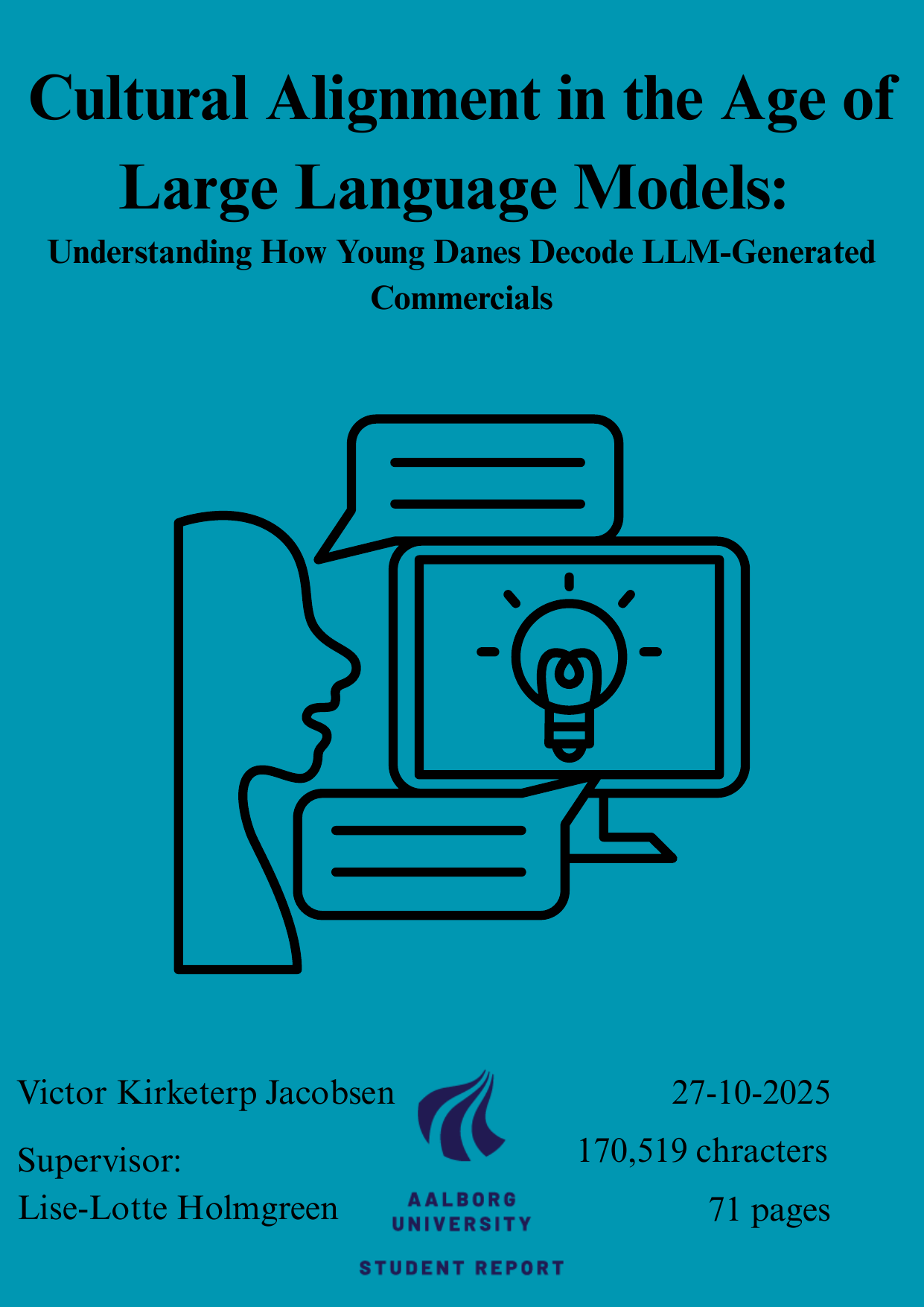
Cultural Alignment in the Age of Large Language Models: Understanding How Young Danes Decode LLM-Generated Commercials
Translated title
Cultural Alignment in the Age of Large Language Models
Author
Term
4. term
Publication year
2025
Submitted on
2025-10-26
Pages
71
Abstract
This thesis examines how the perceived cultural alignment or misalignment of large language model (LLM)-generated commercials shapes young Danish adults’ reception and evaluation of advertising. As generative AI becomes more visible in marketing, a key question is whether model outputs can reflect local communicative norms rather than defaulting to Anglocentric styles. Framed within a social constructivist paradigm, the study understands culture as a dynamic process of meaning-making. It adopts Iben Jensen’s intercultural communication framework (cultural presuppositions, cultural self-perception, cultural fix points, and positions of experience) to analyse how audiences decode AI-mediated messages. Methodologically, the project employs semi-structured interviews (N=4; ages 24–27) and a reflexive thematic analysis (Braun & Clarke) of participants’ reactions to two verified AI/LLM-assisted Danish commercials (Fleggaard’s 2023 Christmas ad and Kim’s Kloakservice brand spot) The study employs a qualitative design based on semi-structured interviews with young Danish adults aged 24–27, who were shown a selection of LLM-generated commercials. Through thematic analysis guided by Jensen’s framework, the research explores how participants identify and interpret elements they perceive as culturally aligned or misaligned. The results show that cultural alignment, rather than the technical quality or realism of the commercials, is the key factor shaping participants’ evaluations. When the commercials reflect communicative traits typically associated with Danish culture such as irony, sincerity, and moderation, they are perceived as relatable and authentic. Conversely, when the language feels exaggerated, mechanical, or overly promotional, participants describe it as artificial and disengaging. These reactions reveal that cultural fit strongly determines whether AI-generated messages are accepted or rejected. The study contributes three implications. First, prompting and editing must be culturally situated: humour, understatement, and idiomatic Danish should be designed in from the outset. Second, human oversight is crucial because audiences notice when scripts read like unedited model output. Third, disclosure and transparency must be considered: transparent, self-aware uses of AI can build trust, while ambiguous uses can erode it. Overall, the thesis concludes that the perceived cultural alignment of LLM-generated commercials directly shapes how young Danish adults receive and evaluate them. Cultural alignment enhances credibility, trust, and emotional engagement, while misalignment creates distance and scepticism. Because most LLMs are trained primarily on English-language data, they risk reproducing communicative styles that do not fully resonate with Danish cultural expectations. The study therefore emphasises that successful AI-assisted advertising requires not only technical accuracy but also cultural sensitivity. As generative AI becomes more prevalent in marketing, its effectiveness will increasingly depend on its ability to reflect and adapt to the evolving communicative norms of local audiences.
Keywords
Documents
